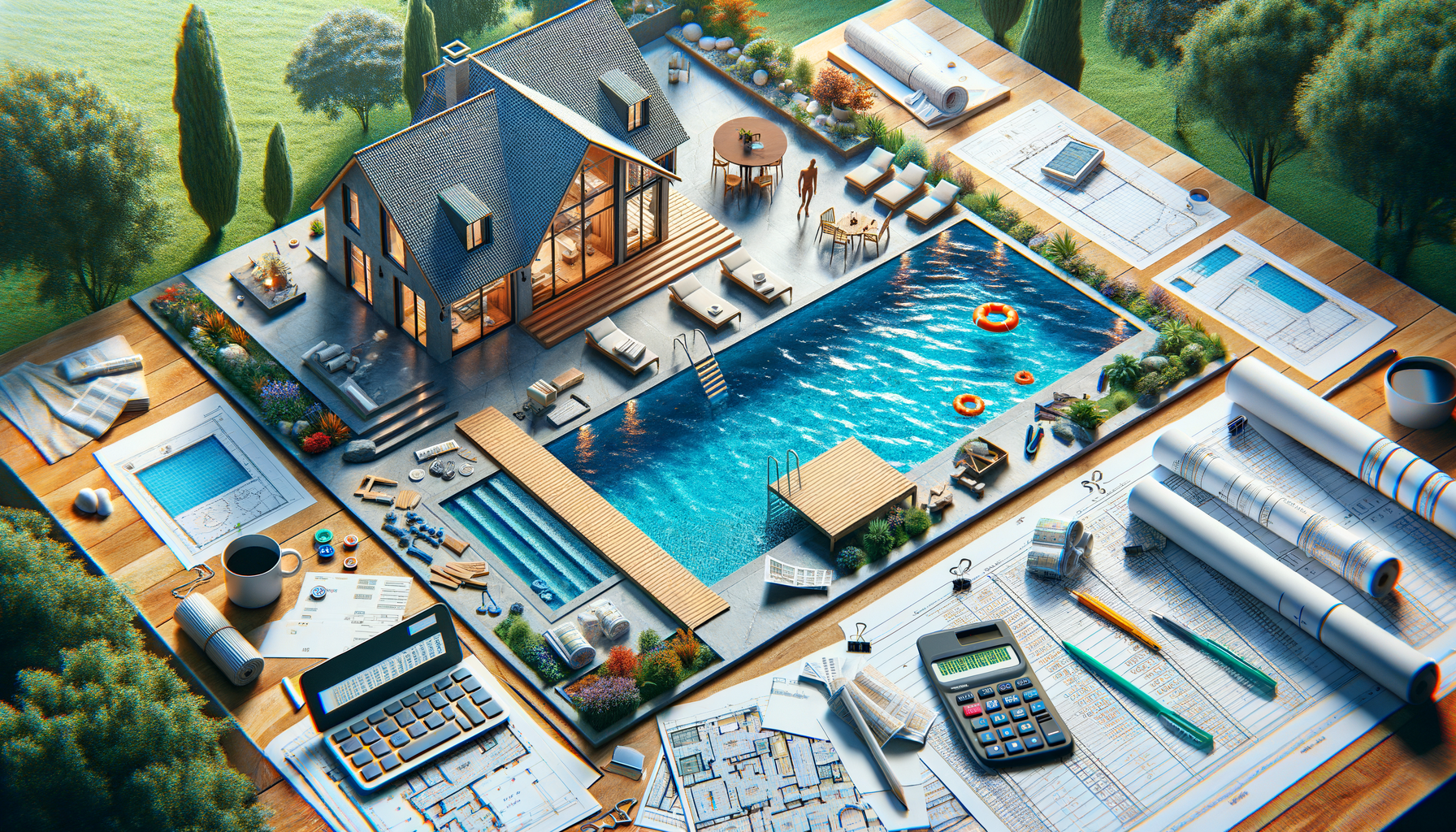Initial Construction Costs
When considering the installation of a home pool, the initial construction costs are a significant factor. These costs can vary widely depending on the type of pool you choose. Generally, there are three main types of pools: in-ground, above-ground, and semi-inground. Each offers unique benefits and comes with different price tags.
In-ground pools are typically the most expensive option. They require extensive excavation, and the materials used, such as concrete or fiberglass, can add to the cost. The average price for an in-ground pool can range from $35,000 to $65,000, depending on the size and customization features.
Above-ground pools are a more budget-friendly alternative. They are easier to install, with costs usually ranging from $1,500 to $5,000. These pools are ideal for those looking for a temporary or seasonal swimming option. However, they may not offer the same aesthetic appeal as in-ground pools.
Semi-inground pools offer a middle ground in terms of cost and installation complexity. They typically cost between $10,000 and $25,000. These pools are partially buried in the ground, providing a more permanent solution than above-ground pools but at a lower cost than fully in-ground options.
Material and Design Choices
The choice of materials and design significantly impacts the cost of a home pool. Concrete pools, for example, are known for their durability and flexibility in design. They can be customized into any shape or size, making them a popular choice for those looking for unique designs. However, this flexibility comes at a higher price, as concrete pools are among the most expensive to install and maintain.
Fiberglass pools offer a different set of advantages. They are pre-fabricated, which means they can be installed more quickly than concrete pools. Fiberglass is also smooth to the touch, reducing the likelihood of algae growth. The cost of fiberglass pools typically ranges from $20,000 to $40,000.
Vinyl liner pools are another option, known for their lower initial cost. These pools use a vinyl liner that can be replaced every 5 to 10 years. While the upfront cost is lower, ranging from $25,000 to $45,000, the need for periodic liner replacement can add to long-term expenses.
Design choices, such as the inclusion of water features, lighting, and landscaping, also affect overall costs. Custom features can significantly enhance the aesthetic appeal and functionality of a pool, but they can also increase the budget substantially.
Permits and Regulations
Before breaking ground on a new pool, it is essential to consider the permits and regulations that may apply in your area. Building a pool typically requires obtaining various permits from local authorities, which can include zoning permits, safety inspections, and environmental assessments. These permits ensure that the pool complies with local building codes and safety standards.
The cost of permits can vary depending on the location and complexity of the project. On average, homeowners can expect to pay between $200 and $2,000 for necessary permits. It is crucial to factor these costs into the overall budget to avoid unexpected expenses.
Additionally, some regions have specific regulations regarding pool fencing, safety covers, and alarms. These safety measures are designed to prevent accidents and ensure the well-being of pool users, particularly children. Compliance with these regulations may require additional investment in safety equipment and installation services.
Understanding the permitting process and associated costs is vital for ensuring a smooth and compliant pool construction project. Consulting with local authorities or a professional pool builder can provide valuable insights into the requirements specific to your area.
Maintenance and Upkeep
Once the pool is installed, ongoing maintenance and upkeep become crucial aspects of pool ownership. Regular maintenance ensures the pool remains safe, clean, and inviting for years to come. The costs associated with maintenance can vary based on the type of pool, its features, and the local climate.
Common maintenance tasks include water testing and balancing, cleaning the pool surface, and maintaining the filtration system. Homeowners can choose to perform these tasks themselves or hire professional pool maintenance services. On average, professional services can cost between $80 and $150 per month.
In addition to routine maintenance, pools may require occasional repairs or replacements of equipment such as pumps, heaters, and filters. These costs can add up over time, with repairs typically ranging from $200 to $1,000 depending on the extent of the issue.
Seasonal considerations, such as winterizing the pool in colder climates, can also impact maintenance costs. Properly closing the pool for the winter and reopening it in the spring can prevent damage and extend the pool’s lifespan.
By budgeting for ongoing maintenance and addressing issues promptly, homeowners can enjoy their pool with minimal disruptions and ensure it remains a valuable asset to their property.
Energy Efficiency and Environmental Considerations
In today’s environmentally conscious world, energy efficiency and sustainability have become important considerations for pool owners. Implementing energy-efficient technologies and practices can reduce the environmental impact of a pool while also lowering utility costs.
One of the primary areas where energy efficiency can be improved is the pool’s heating system. Solar heaters, for instance, harness the sun’s energy to warm the pool water, reducing reliance on traditional gas or electric heaters. While the initial investment in solar heating systems can be higher, they offer significant long-term savings on energy bills.
Another area to consider is the pool’s filtration system. Variable-speed pumps are an energy-efficient alternative to traditional single-speed pumps. They adjust their speed based on the pool’s needs, reducing energy consumption and extending the life of the pump.
Additionally, the use of pool covers can help conserve water and reduce heating costs by minimizing evaporation. Covers also keep debris out of the pool, reducing the need for frequent cleaning and chemical treatments.
By investing in energy-efficient technologies and adopting sustainable practices, pool owners can enjoy a more eco-friendly pool experience while reducing their overall operating costs. Exploring these options during the planning and construction phases can lead to a more sustainable and cost-effective pool in the long run.




Leave a Reply